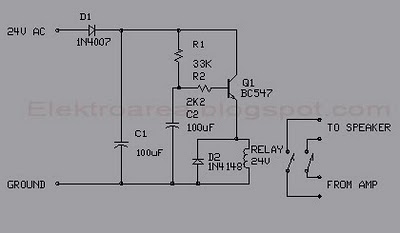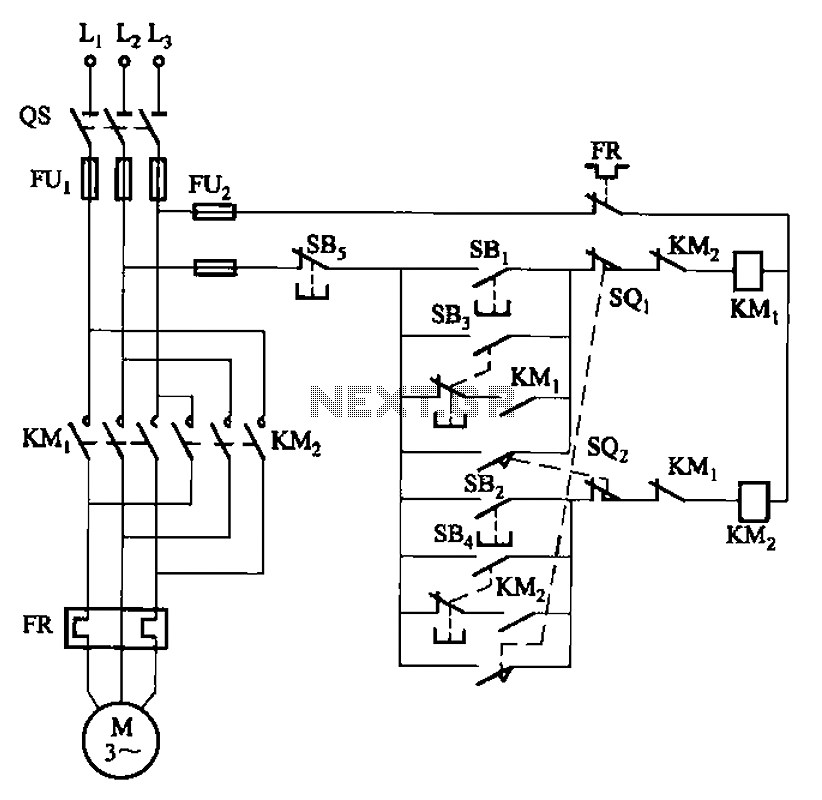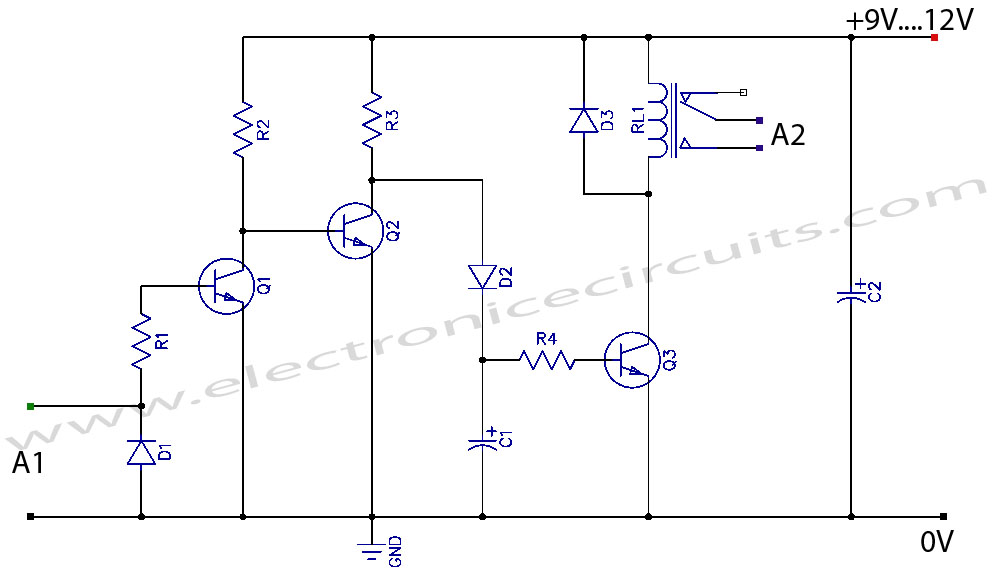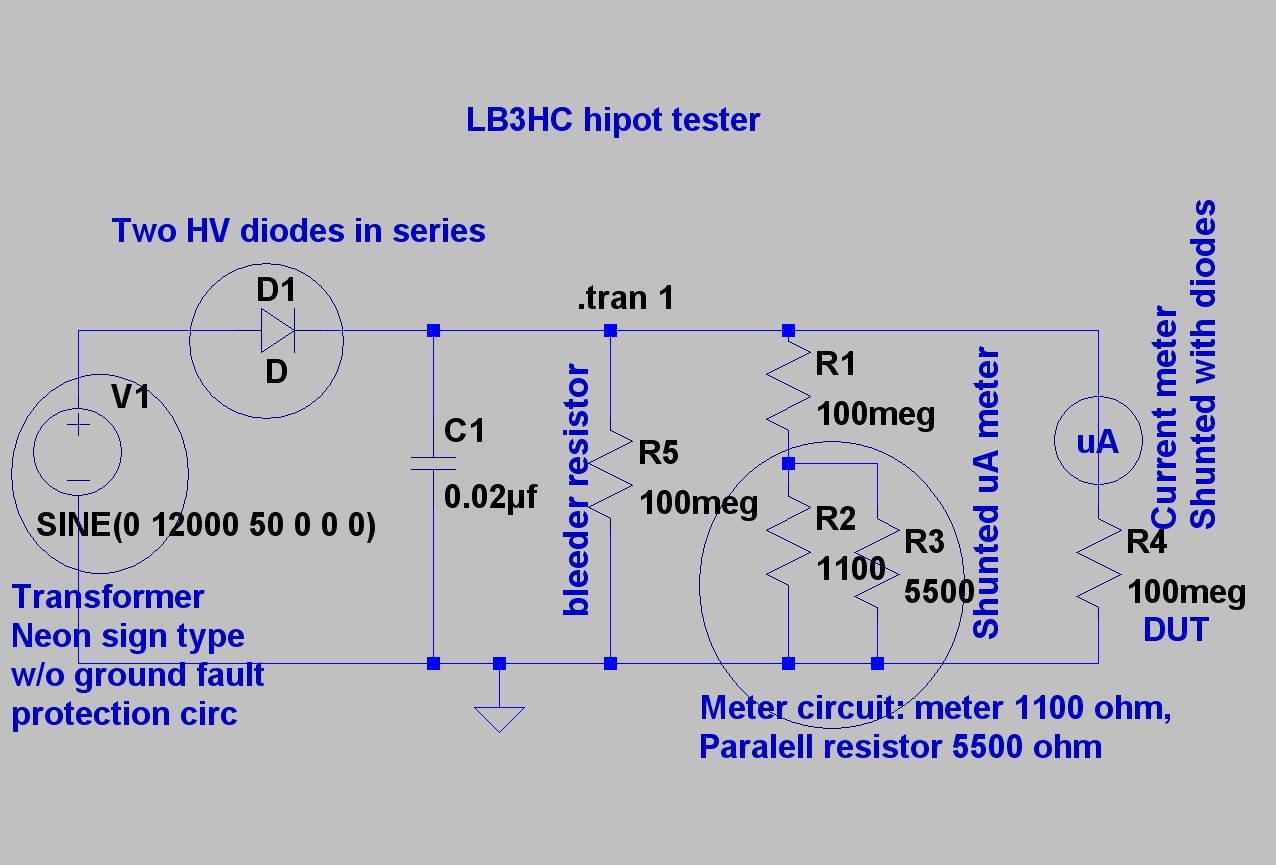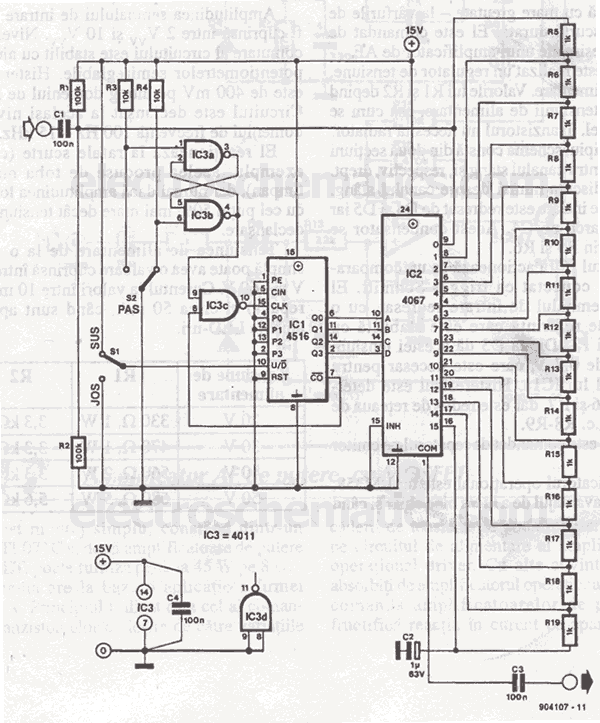
Travel schematic model remote control
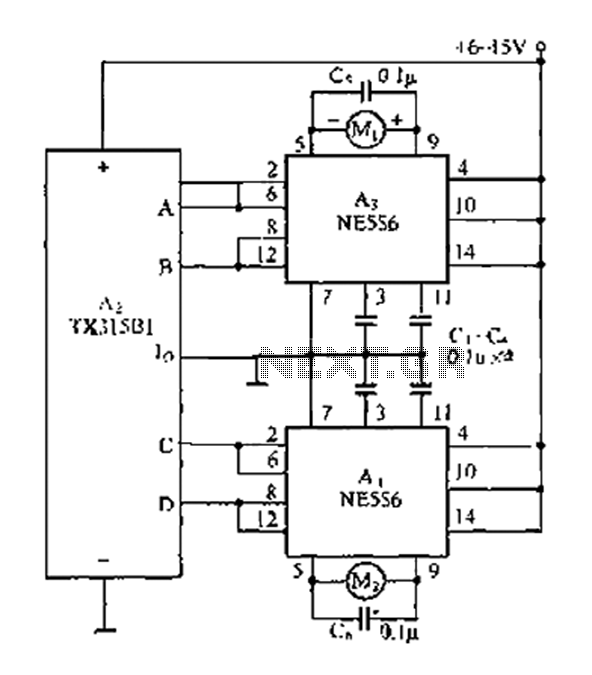
The travel remote control model is represented by a circuit diagram. The NE556 is a dual time base IC that includes two separate circuits, each consisting of a Schmitt trigger circuit. The output control is achieved through the TX315B1, which is realized by a flip-flop. When the input to the Schmitt trigger is low, the output terminal produces a high signal; conversely, when the input is high, the output is low. The motor operation is determined by the levels at both ends: if both ends are high or low, the motor remains stopped; if one end is high and the other low, the motor rotates in one direction. If the high and low signals are swapped, the motor reverses its direction of rotation.
The circuit utilizes the NE556 integrated circuit, which is an evolution of the classic 555 timer, designed for more complex timing and control applications. The dual functionality of the NE556 allows for simultaneous control of two independent timing operations or trigger events. Each section of the NE556 integrates a Schmitt trigger, which is essential for providing clean transitions between high and low states. This characteristic is particularly useful in noisy environments, as it minimizes false triggering.
The TX315B1 module functions as a transmitter in the remote control system, interfacing with the NE556 to manage motor control based on the received signals. The flip-flop configuration is employed to maintain the state of the output, ensuring that the motor's direction can be controlled by the logic levels applied to the Schmitt trigger inputs.
The motor control logic is straightforward: when both inputs to the Schmitt trigger are at the same level (either high or low), the output is designed to disable the motor, effectively stopping it. This safety feature prevents accidental motor activation. When one input is high and the other is low, the output signals the motor to rotate in a designated direction. The ability to reverse the motor's direction by swapping the high and low signals provides versatility in applications where bidirectional motion is required.
Overall, this circuit design is well-suited for remote control applications, offering reliable motor control with the added benefit of reversing capability, making it ideal for various robotic and automation projects. The integration of the NE556 and TX315B1 components ensures efficient operation and responsiveness to control commands. As shown in FIG travel remote control model is a circuit diagram, NE556 is a dual time base IC 555 includes two separate circuits, each consisting of a Schmitt trigger circuit 555, the output of the control TX315B1 realized by flip-flop flip. When the input of the Schmitt trigger is low, its output terminal output high; when the input is high, its output of low output. When both ends of the motor are high or low, the motor is stopped; when both ends of the motor is high end, and the other side is low, the motor rotation; if the motor across the high, low swap, reverse the direction of rotation of the motor.
The circuit utilizes the NE556 integrated circuit, which is an evolution of the classic 555 timer, designed for more complex timing and control applications. The dual functionality of the NE556 allows for simultaneous control of two independent timing operations or trigger events. Each section of the NE556 integrates a Schmitt trigger, which is essential for providing clean transitions between high and low states. This characteristic is particularly useful in noisy environments, as it minimizes false triggering.
The TX315B1 module functions as a transmitter in the remote control system, interfacing with the NE556 to manage motor control based on the received signals. The flip-flop configuration is employed to maintain the state of the output, ensuring that the motor's direction can be controlled by the logic levels applied to the Schmitt trigger inputs.
The motor control logic is straightforward: when both inputs to the Schmitt trigger are at the same level (either high or low), the output is designed to disable the motor, effectively stopping it. This safety feature prevents accidental motor activation. When one input is high and the other is low, the output signals the motor to rotate in a designated direction. The ability to reverse the motor's direction by swapping the high and low signals provides versatility in applications where bidirectional motion is required.
Overall, this circuit design is well-suited for remote control applications, offering reliable motor control with the added benefit of reversing capability, making it ideal for various robotic and automation projects. The integration of the NE556 and TX315B1 components ensures efficient operation and responsiveness to control commands. As shown in FIG travel remote control model is a circuit diagram, NE556 is a dual time base IC 555 includes two separate circuits, each consisting of a Schmitt trigger circuit 555, the output of the control TX315B1 realized by flip-flop flip. When the input of the Schmitt trigger is low, its output terminal output high; when the input is high, its output of low output. When both ends of the motor are high or low, the motor is stopped; when both ends of the motor is high end, and the other side is low, the motor rotation; if the motor across the high, low swap, reverse the direction of rotation of the motor.
